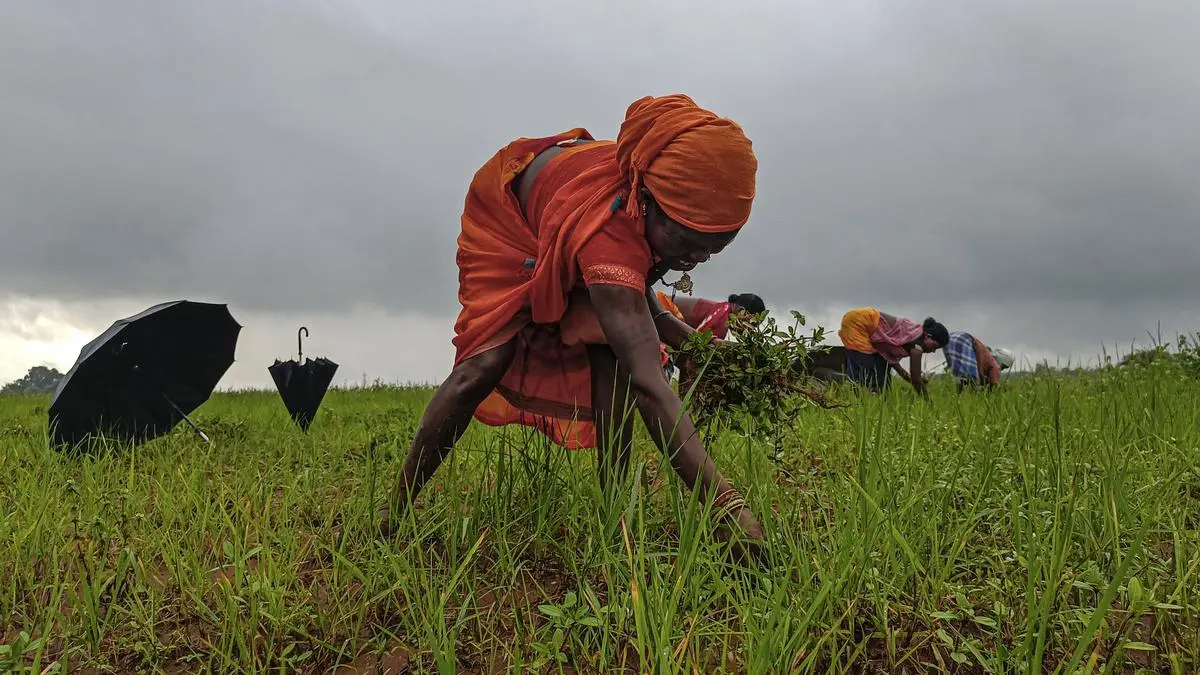Copyright thehindubusinessline

This year’s devastating floods in Punjab served as a stark reminder of how climate change is threatening India’s food security and the livelihoods of millions of farmers. The State, once the poster child of the Green Revolution, is now facing severe environmental stress—falling groundwater levels, soil degradation, stubble burning, and rising farmer debt. These compounding crises demand urgent solutions that can restore ecological balance while ensuring farm profitability. Regenerative agriculture offers a path forward by directly addressing three major climate change challenges—depleting water resources, poor soil health, and air pollution. Punjab’s deepening water crisis Punjab is on the brink of a “water emergency” because of the unregulated and excessive utilisation of water resources. The total annual groundwater recharge of Punjab has been assessed at 18.84 billion cubic meters (BCM). One cubic meter is equal to 1,012 litres of water. The annual groundwater extraction of the state stands at 27.8 BCM—an extraction rate of 163.76 per cent. Most districts in Punjab are now classified as “overexploited”, and predictions indicate that groundwater resources in Punjab could be exhausted in the next 14 years. Presently, the way we are using water, Punjab’s total annual water demand is 66.12 BCM, but the available water is 52.85 BCM. There’s a pressing need to set a policy target of bringing down water demand to 46nBCM. The target of saving 20 BCM annually would balance out the water availability/demand for all the sectors and help in restoring the depleted groundwater aquifers/reserves. The objective of saving 20 BCM water can be realised by implementing the suggested policy measures across various sectors such as agriculture, industry and households. Stubble burning and air pollution Punjab’s air quality crisis is well known. Stubble burning—an unintended consequence of intensive rice-wheat farming—releases massive amounts of carbon dioxide, carbon monoxide, sulphur dioxide, particulate matter, and ash. Burning one ton of paddy straw alone emits roughly 1.5 tonnes of CO₂ and depletes soil nutrients like nitrogen and phosphorus. Combined with methane emissions from waterlogged paddy fields, these practices worsen climate change and public health. Breathing polluted air causes respiratory distress, cognitive impairment in children, and reduced productivity. Addressing stubble burning through better residue management and regenerative techniques is crucial not only for the environment but also for human health. Poor soil health and farmer distress Punjab uses more chemical fertilisers than any other state—247.6 kg per hectare against the national average of 139.8 kg/ha. This has resulted in general toxicity of the upper crust of soil, harming the microflora and fauna essential for soil health. Indiscriminate and large-scale burning of biomass, both rooted and loose, by farmers has also been continuously harming the health of the soil. Over-reliance on paddy cultivation has led to the development of hardpan (a dense and compact layer of soil), impeding the flow of nutrients, air, and water into the soil, decreasing its fertility. Low agricultural yields, in turn, are leading to farmer distress. Farmers are grappling with rising debt due to high input costs and declining profitability. Between 2000 and 2015, over 16,000 farmers and agricultural labourers in Punjab reportedly committed suicide due to financial stress. Rice-wheat monocropping has trapped farmers in a vicious cycle of diminishing returns, rising input costs, and increased vulnerability to environmental stressors such as climate change. These numbers highlight the profound human cost of this unsustainable agricultural model. Regenerative agriculture as climate action Punjab must urgently shift to regenerative agriculture—a holistic approach that restores soil health, conserves water and reduces dependence on chemical inputs. These practices not only rebuild natural ecosystems but also make farms more resilient to floods, droughts, and market shocks. Punjab can restore its natural resources and secure a sustainable agricultural future by shifting to crop diversification, implementing better water management, and reducing harmful practices like stubble burning. Roundglass Foundation, a not-for-profit, has been promoting regenerative agriculture farming practices in the state, and more than 1,000 farmers have been trained in these different, and sometimes new, ways of growing crops that will lead to better outcomes for water conservation, soil regeneration, and air quality. Below, I am sharing some proven interventions under regenerative agriculture that benefit the water, soil, and air. Water conservation Soil health restoration Air quality improvement A path to climate resilience Punjab stands at a crossroads. Continuing with water-intensive, input-heavy agriculture will push the state toward ecological collapse and deepen rural distress. By embracing regenerative agriculture, Punjab can restore its soils, replenish groundwater, clean its air, and give farmers a profitable, sustainable livelihood. This year’s floods should be a wake-up call for everyone—climate change is not a distant threat but a grim reality. Stakeholders—be it government, non-government agencies, NGOs, individuals, civil society—need to join hands to address the increasing environmental distress in Punjab and the rest of India by pooling in ideas, resources, time, and effort. Collective action, reinforced with a sense of responsibility towards a sustainable future, has the power to shift gears and decelerate the relentless march of climate change. The author, a leading authority on sustainable agricultural practices and a former IAS officer, is currently heading Roundglass Foundation’s Regenerative Agriculture programme Published on September 27, 2025



